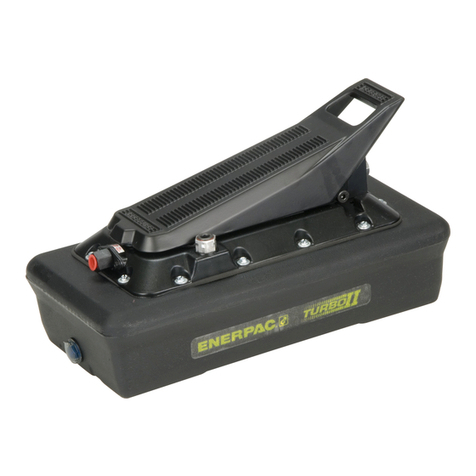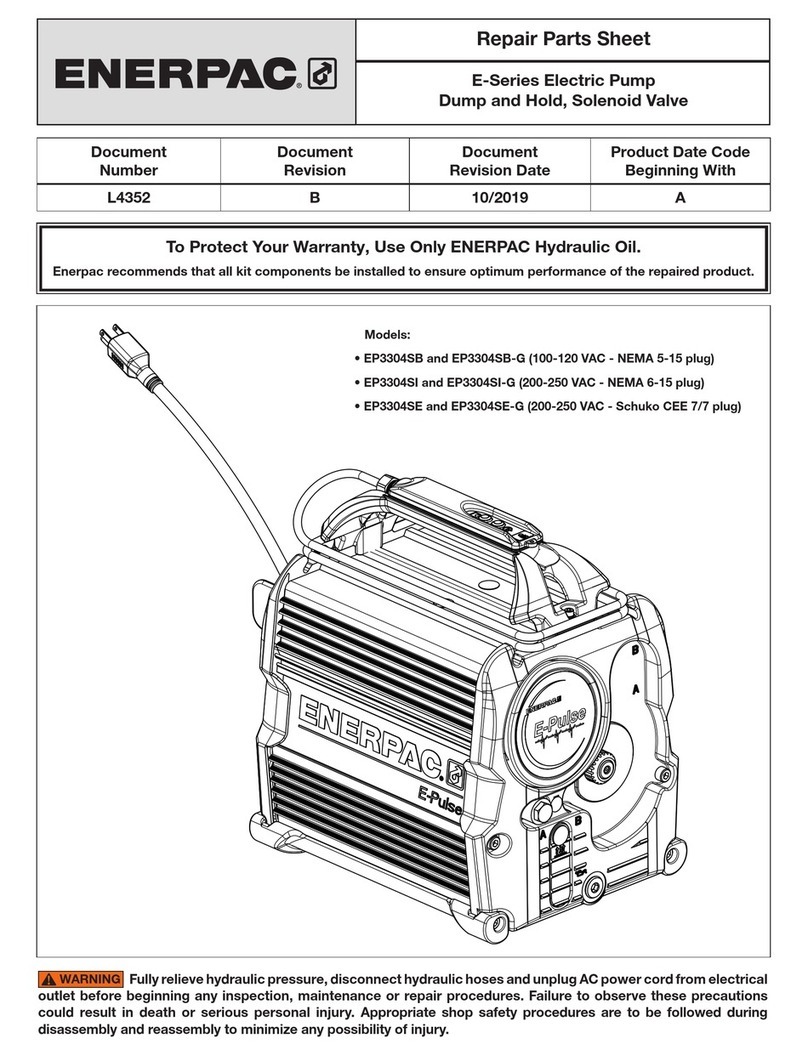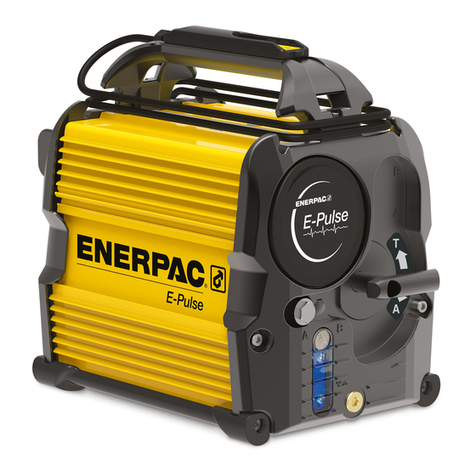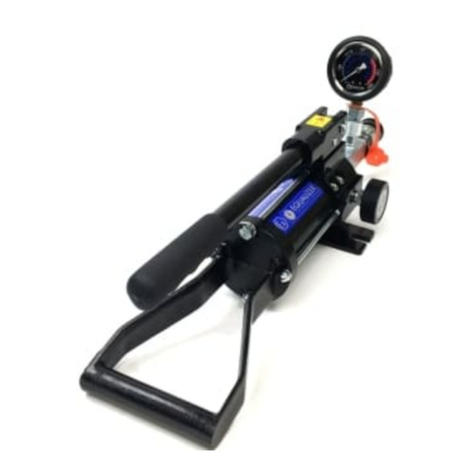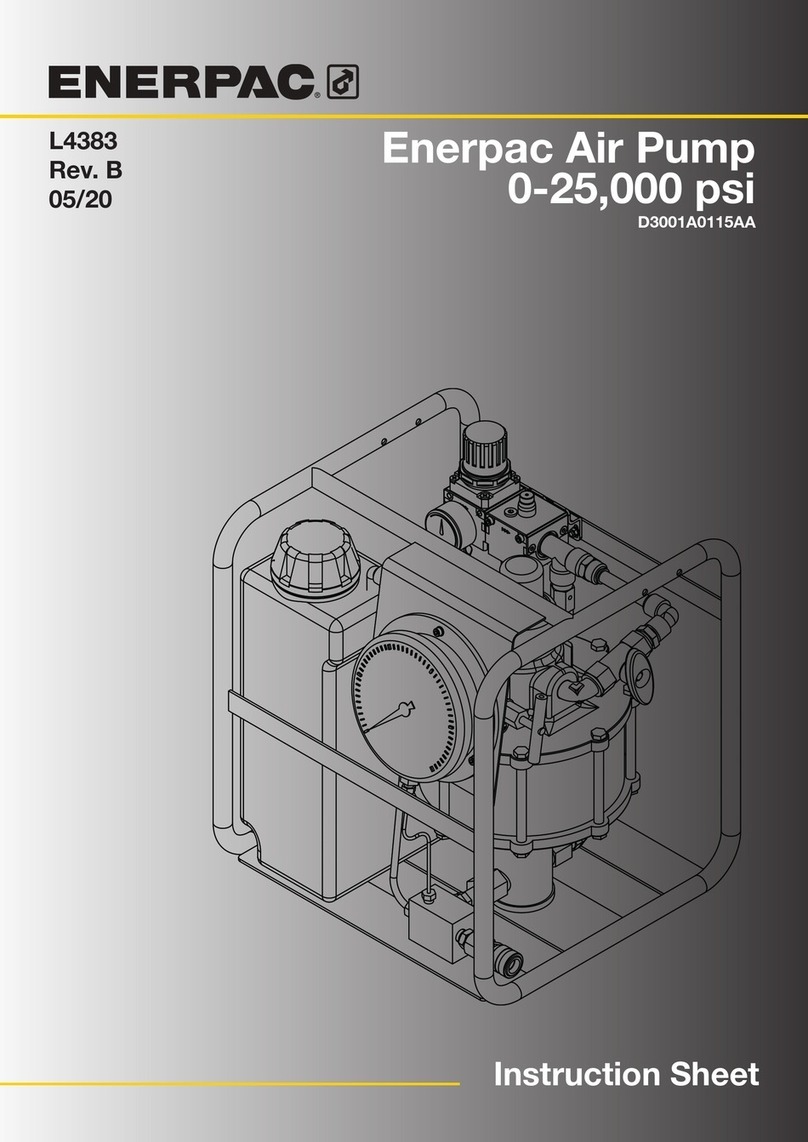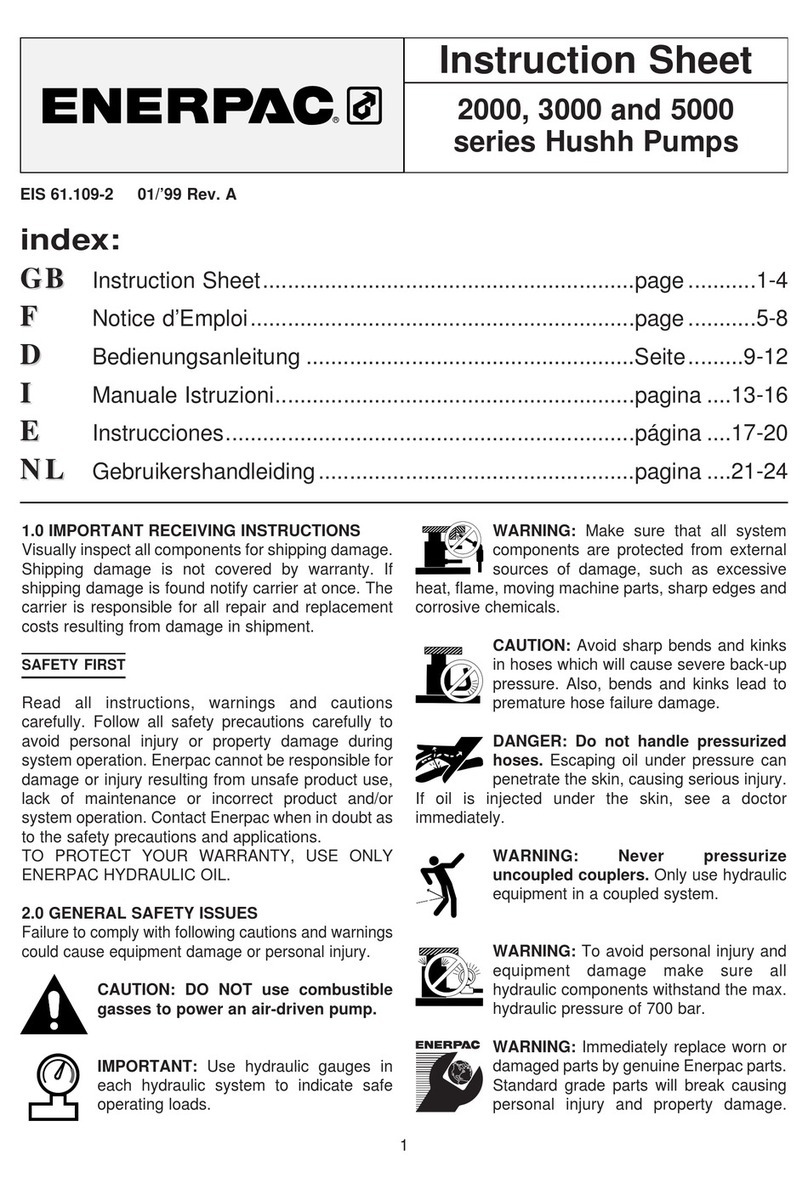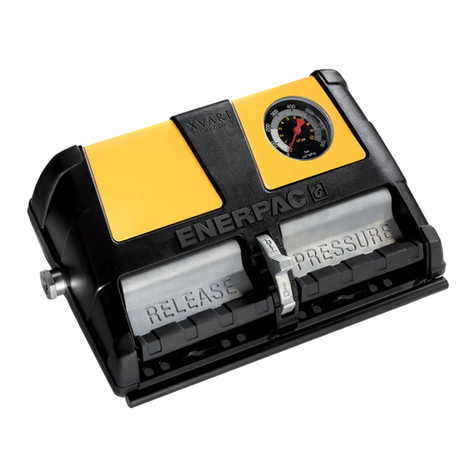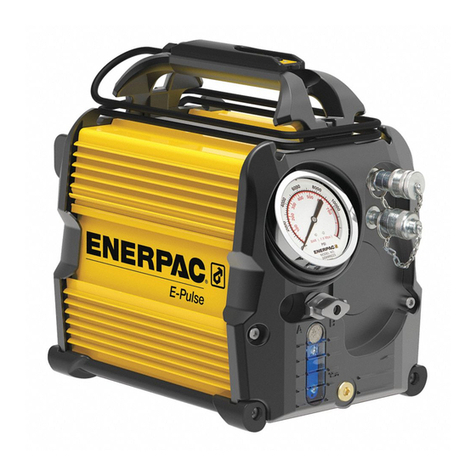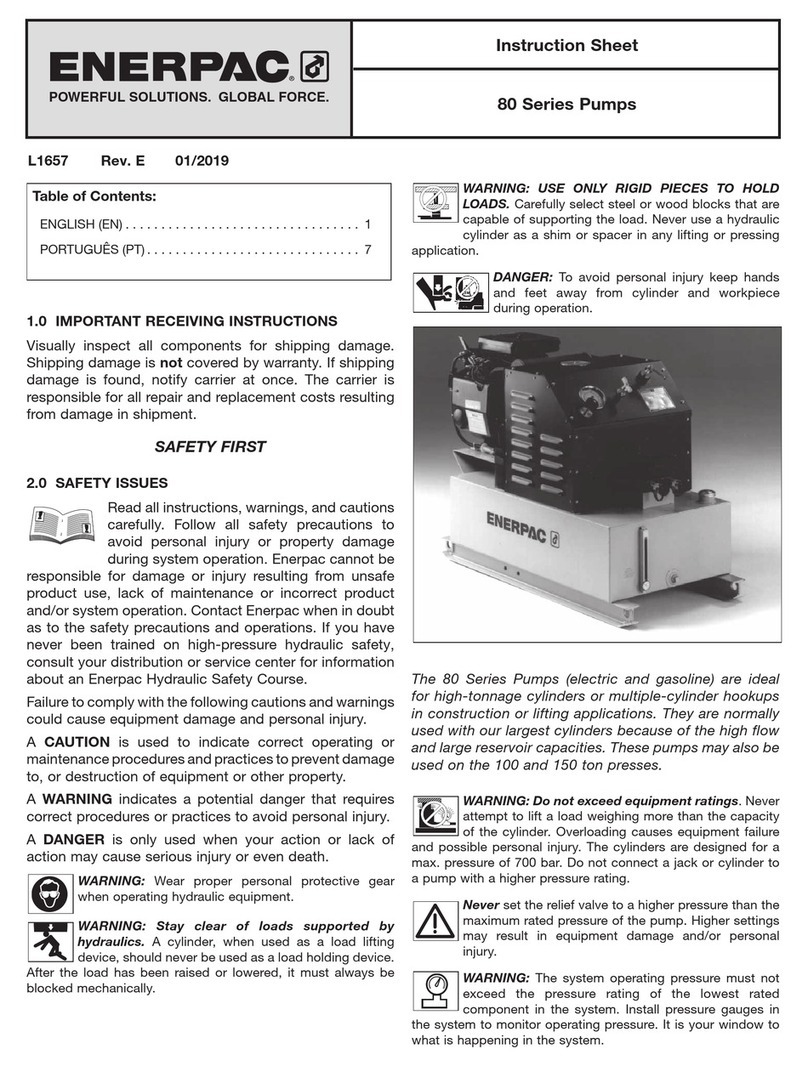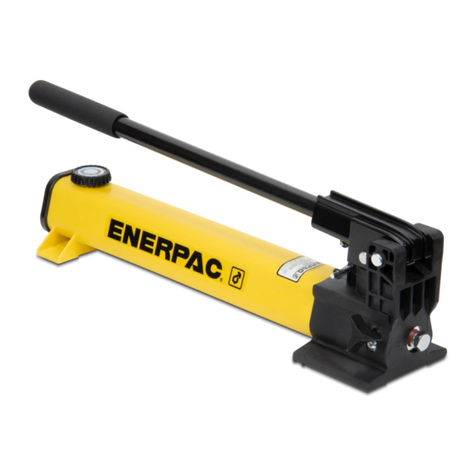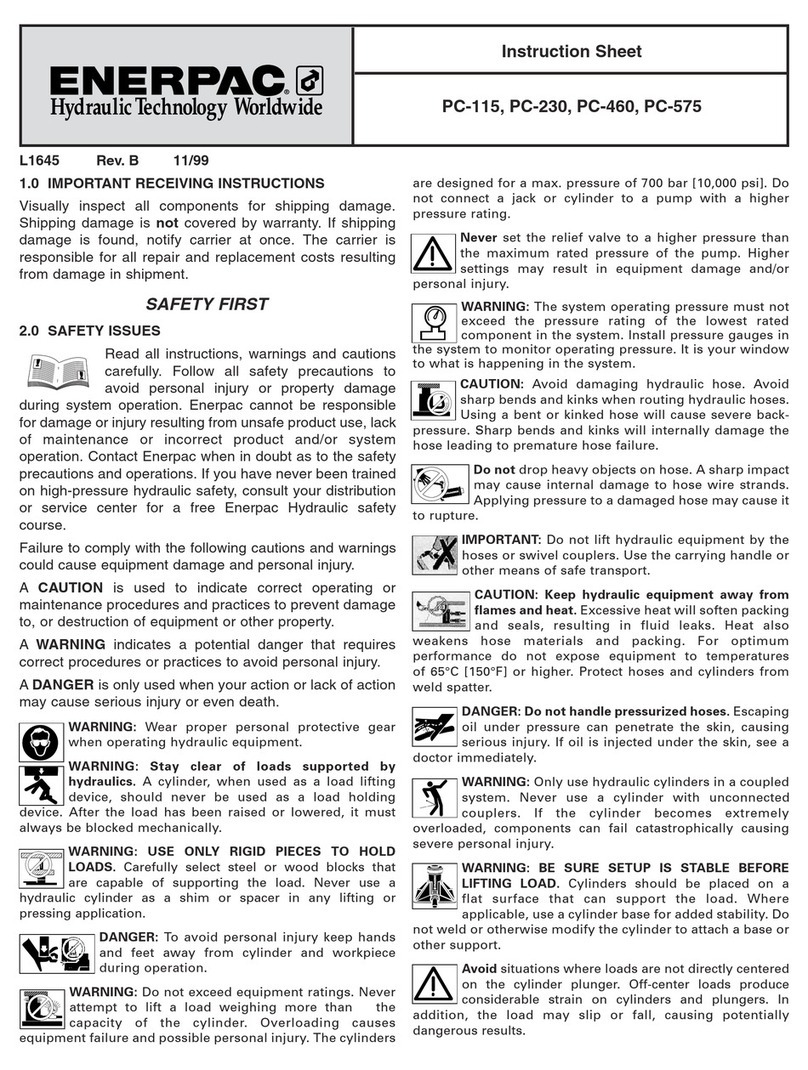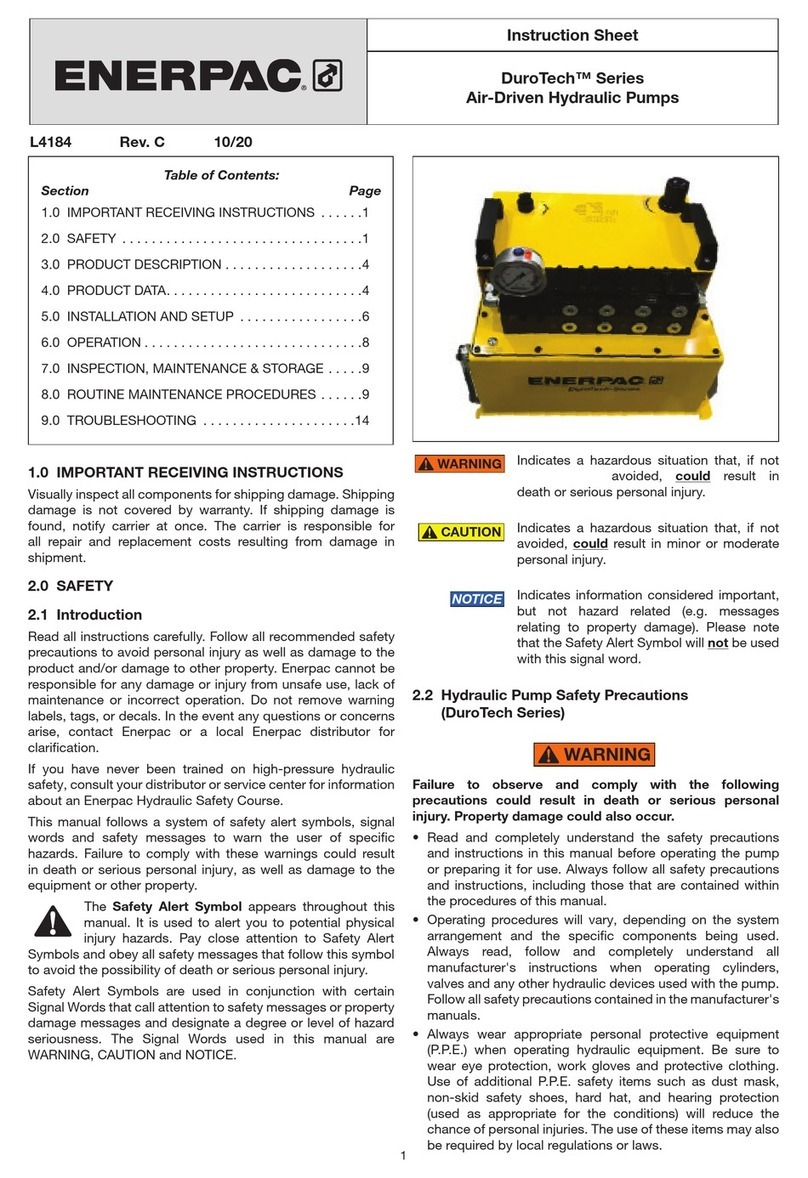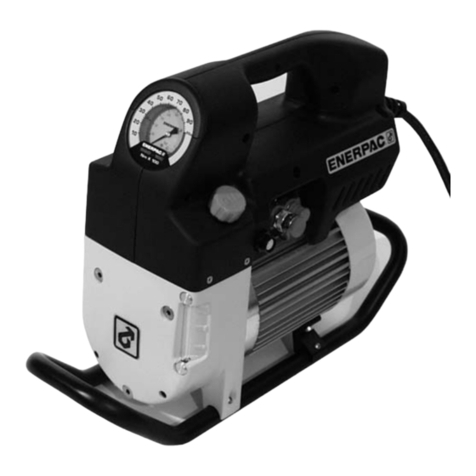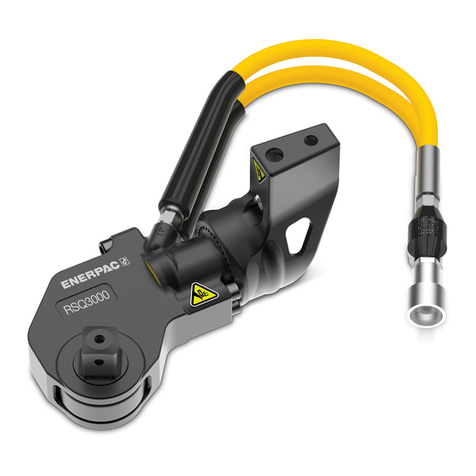
L4739_a 3
1. Safety 1.1 Safety Precautions
Failure to observe and comply with the following
precautions could result in death or serious personal
injury. Property damage could also occur.
• Read and completely understand the safety
precautions and instructions in this manual before
operating the pump or preparing it for use. Always
follow all safety precautions and instructions,
including those that are contained within the
procedures of this manual.
• Operating procedures will vary, depending on
the system arrangement. Always read, follow,
and completely understand all manufacturer’s
instructions when operating the powerpack and
all other devices used with it. Follow all safety
precautions contained in the manufacturer’s
manuals.
• Always wear appropriate personal protective
equipment (P.P.E.) when operating hydraulic
equipment. Be sure to wear eye protection, work
gloves and protective clothing. Use of additional
P.P.E. safety items such as dust mask, non-skid
safety shoes, hard hat, and hearing protection
(used as appropriate for the conditions) will reduce
the chance of personal injuries. The use of these
items may also be required by local regulations or
laws.
• Do not handle pressurized hoses. Escaping oil
under pressure can penetrate the skin. If oil is
injected under the skin, see a doctor immediately.
• Do not pressurize disconnected couplers.
• Use hydraulic cylinders only in a coupled system.
Never use a cylinder with uncoupled couplers.
If the cylinder becomes extremely overloaded,
components can fail catastrophically causing
severe personal injury.
• Do not remove or disable the pump relief valve.
• Install pressure gauge(s) in the system to monitor
operating pressure. It is your window to see what
is happening in the system.
• Never set a relief valve to a higher pressure than
the maximum rated pressure of the pump and
cylinder. If ratings are different, relief valve setting
should not exceed the setting of the lowest rated
component (pump or cylinder). Higher settings
may result in equipment damage and/or personal
injury.
• Do not exceed equipment ratings. Never attempt
to lift a load weighing more than the rated capacity
of the cylinder. Overloading may cause equipment
failure and possible personal injury.
• Be sure setup is stable before moving load.
• Always perform a visual inspection of the equipment
before placing it into operation. If any problems are
found, do not use it. Have the equipment repaired
and tested by an Enerpac Authorized Service
Center before it is returned to service.
• Allow only trained and experienced personnel to
supervise and perform procedures.
• Use only rigid pieces to hold loads. Carefully select
steel or wood blocks that are capable of supporting
the load.
WARNING
Read all instructions carefully. Follow all recommended
safety precautions to avoid personal injury as well
as damage to the product and / or damage to other
property. Enerpac cannot be responsible for any
damage or injury from unsafe use, lack of maintenance,
or incorrect operation. Do not remove warning labels,
tags, or decals. In the event that any questions or
concerns arise, contact Enerpac or a local Enerpac
distributor for clarification.
Save these instructions for future use.
If you have never been trained on high-pressure
hydraulic safety, consult your distributor or service
center for information about Enerpac Hydraulic Safety
Courses.
This manual follows a system of safety alert symbols,
signals, words, and safety messages to warn the user of
specific hazards. Failure to comply with these warnings
could result in death or serious personal injury, as well
as damage to the equipment or other property.
The Safety Alert Symbol appears throughout
this manual. It is used to alert you to potential
physical injury hazards. Pay close attention
to Safety Alert Symbols and obey all safety
messages that follow this symbol to avoid the possibility
of death or serious injury.
Safety Alert Symbols are used in conjunction with certain
Signal Words that call attention to safety messages or
property damage messages and designate a degree or
level of hazard seriousness. The Signal Words used in
this manual are DANGER, WARNING, CAUTION, and
NOTICE.
Indicates a hazardous situation that, if not
avoided, will result in death or serious personal injury.
Indicates a hazardous situation that, if not
avoided, could result in death or serious personal injury.
Indicates a hazardous situation that, if not
avoided, could result in minor or moderate personal
injury.
Indicates information considered
important, but not hazard related (e.g. messages related
to property damage). Please note that the Safety Alert
Symbol will not be used with the signal word.
WARNING
